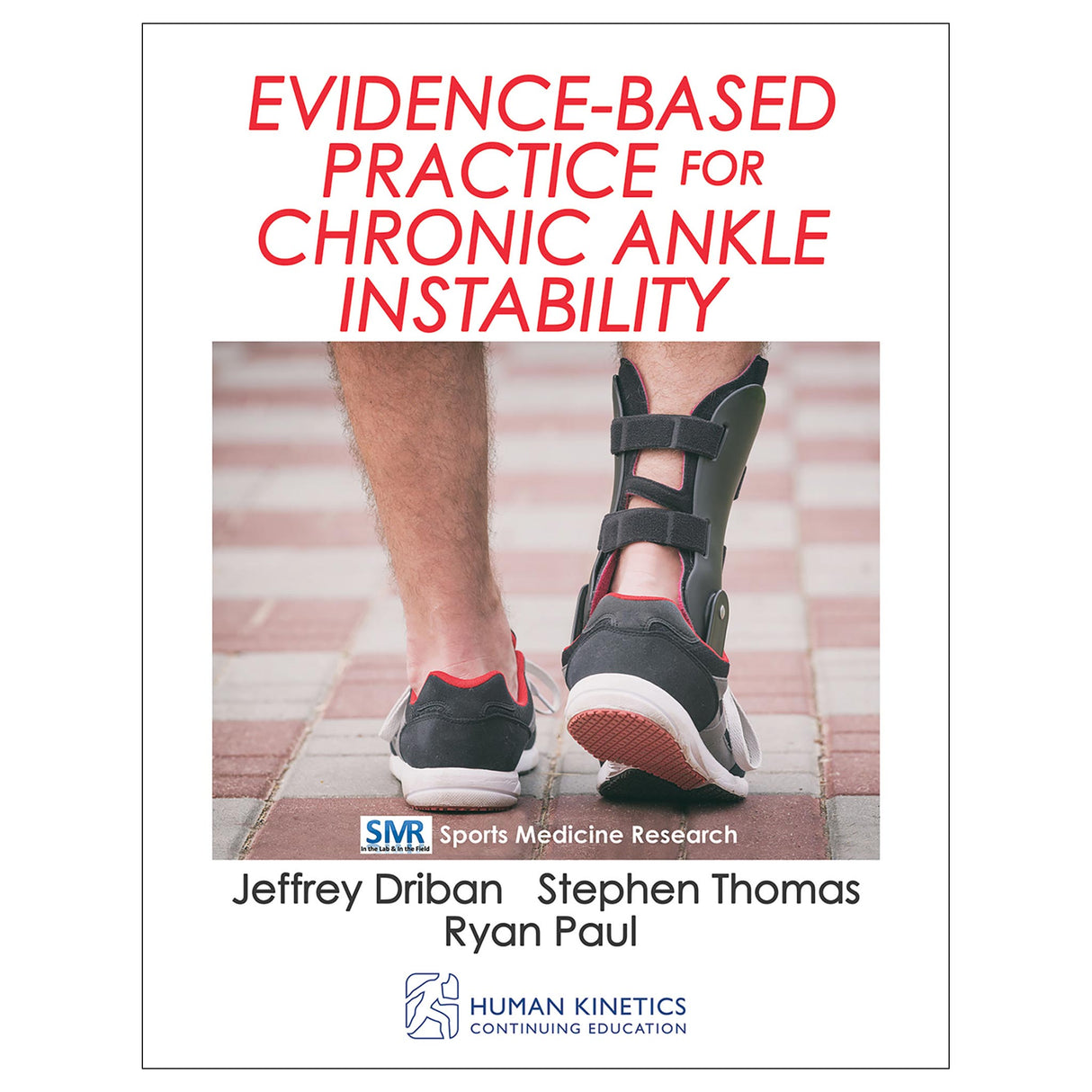Evidence-Based Practice for Chronic Ankle Instability Online CE Course
$104.95 CAD
Human Kinetics strongly recommends that you complete your exam within the calendar year of your date of purchase to ensure approved credits do not expire for your organization.
- 20 online articles from sports medicine journals
- Online continuing education exam
This course supports the initiative in the athletic training profession to integrate the best new research and evidence into clinical decision making with the goal of improving patient outcomes.
Once you complete the readings and pass the 100-question exam, you can print a certificate for continuing education credits.
Learning Objectives
- Describe the changes in physical activity levels for people with chronic ankle instability.
- Educate others about the changes in perception and psychological changes associated with chronic ankle instability.
- Be able to implement the optimal treatment interventions for preventing chronic ankle instability.
- Educate others about the health and economic benefits of prescribing rehabilitation after an ankle sprain.
- Explain how patients with chronic ankle instability compensate throughout their kinetic chain.
Audience
Certified athletic trainers and athletic therapists.Article 2. Ain’t No Half Stepping—Students With Chronic Ankle Instability Are Less Active
Article 3. Athletes’ Ankle Sprain Fears
Article 4. Chronic Ankle Instability Starts Earlier Than We Thought
Article 5. Finding Who Will Develop Chronic Ankle Instability
Article 6. Acute Care Needs to Focus More on Preventing Chronic Ankle Issues
Article 7. Aiming for the STARS for Chronic Ankle Instability
Article 8. Balancing Chronic Ankle Instability
Article 9. Shake It Up: Vibration Training Improves Balance for Chronic Ankle Instability Group
Article 10. To Brace or Not to Brace . . . That Is the Question
Article 11. A Winning Combination: Manual Therapy and Exercises for Recurrent Ankle Sprains
Article 12. Do You Have 120 Seconds to Improve Outcomes for Athletes With Chronic Ankle Instability?
Article 13. Hopping for Better Days With CAI
Article 14. More Is Better: Exercise Therapy for the Ankle
Article 15. Fibular Taping Versus Traditional Taping in Patients With Chronic Ankle Instability
Article 16. Cleared for Landing? Prelanding Strategies Among Athletes With Chronic Ankle Instability
Article 17. Too Much Glute (Max) and Not Enough Reach
Article 18. Put It All Together for Better Outcomes for Patients With Chronic Ankle Instability
Article 19. Hip Kinematics in Patients With Chronic Ankle Instability
Article 20. It’s All in the Hips—Landing Compensations With Chronic Ankle Instability





